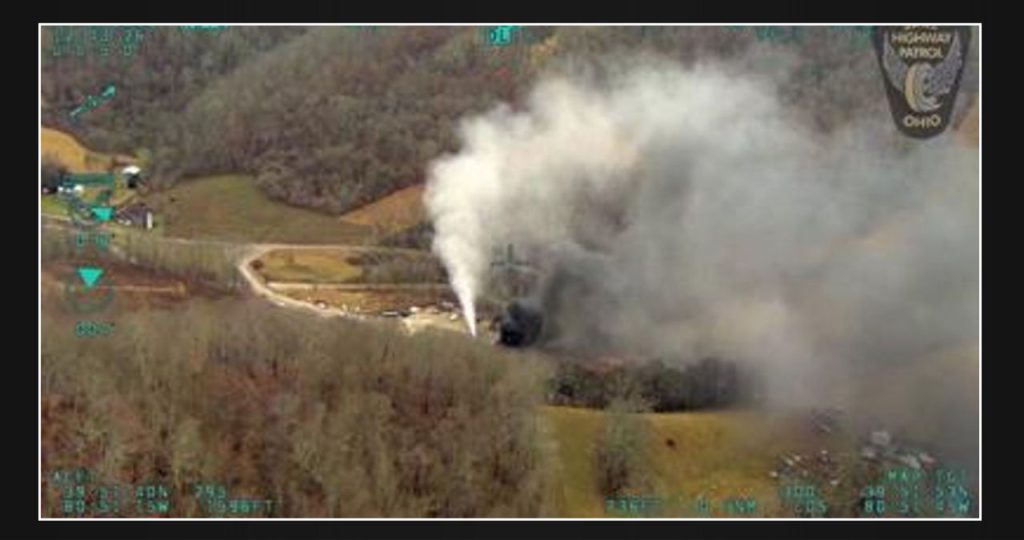The Ohio gas and oil industry’s claims of being environmentally-friendly are being challenged by a Facebook page that closely monitors fracking-related accidents and cleanups that have taken place almost daily for the past nine years. With thousands of incidents being recorded, the page presents a compelling case against the industry’s claims.
According to the FracTracker Alliance, a national non-profit organization that studies, maps, and communicates the risks and impacts of oil, gas, and petrochemical development, the trends in reports suggest a concerning pattern of insufficient regulation and only superficial efforts to clean up the oil, gas, and radioactive fracking wastewater from lands and water across the state.
Ted Auch, the Midwest program director at FracTracker Alliance, expressed that the reports suggest that the data collection, archiving, and dissemination regarding these accidents are at Analog Age levels. He added that while the industry rapidly progresses in a digital age, the Ohio Department of Natural Resources (ODNR) operates at a slow pace, resulting in a growing gap between the industry and ODNR. This gap leads to more data obfuscation and bigger data gaps.
According to FracTracker’s analysis of 1,400 out of 1,500 gas and oil-related incidents reported by the ODNR earlier this year, it was found that the severity and frequency of such incidents in Ohio over the past five years have been significantly misrepresented.
The Daily Accident Report: How it’s Created
In June, Jenny Morgan from Columbus, who is a member of the Save Ohio Parks steering committee and a well-known fracking waste brine activist, singer, poet, and songwriter, created the Gas and Oil Facebook page which can be accessed through this link https://bit.ly/3Xi236X.
After a radio interview with Rob Brundrett of the Ohio Oil and Gas Association, where he claimed that the fracking industry had no indication of water pollution and stated that fracking is “safe and environmentally friendly,” she delved into the reports on inspections, cleanups, and sign-offs on oil and accidents by ODNR.
Morgan expressed her horror upon reading each individual case of oil and gas-related accidents that occur regularly. She noted that these reports have been filed by the ODNR itself. The fracking process involves the use of dangerous and unregulated chemicals, which create hundreds of millions of gallons of contaminated and radioactive waste annually. Morgan questions the impact of these accidents on Ohio’s land, creeks, plant and animal habitats, biodiversity, drinking water, and overall health.
Over the past month, Facebook has been flooded with ODNR reports that share common themes. Most of these reports involve an oil and gas company that self-reports an accident. Upon inspection by ODNR, orders are given for cleanup and soil and water remediation. To cosmetically clean up the site, foam booms are placed across bodies of water to contain radioactive fracking “produced water,” or contaminated soil is removed and transported to area landfills by the responsible party.
In its No. 14 entry, the Daily Accident Report shared a documented incident by ODNR that highlights how a seemingly minor mistake by a fracking truck driver led to a significant environmental accident.
On July 11, 2023, around 9 a.m., a Hilcorp Energy Fairfield-Tarka 14H wellhead in Columbiana County was hit by an oil and gas contractor’s truck, leading to a pressurized release of natural gas. This unfortunate incident caused the wellhead to spew approximately 630 to 840 gallons of contaminated drilling waste, or produced water, into the air. It took until 1 p.m. the next day to finally contain the spill. The natural gas leak resulted in the evacuation of around 450 nearby residents.
Approximately 111 tons of soil that was contaminated was transported to Carbon Limestone Landfill for storage.
FracTracker analysis reveals that the proposed carbon capture hub project in southeast Ohio, backed by the federal Department of Energy, poses a significant risk to the environment, human health, and safety. The untested technology used in the project is a concern for Ohio’s population.
Before publication, the ODNR was sent inquiries regarding their inspection and monitoring protocols for oil and natural gas incidents in Ohio, aimed at safeguarding both the environment and the public. However, they did not provide a response.
According to Morgan, the number of gas and oil accidents that occur on a regular basis can be quite staggering. She believes that the Daily Accident Report serves as a reminder that industry representatives such as Rob Brundrett are essentially salespeople who are compensated generously for their efforts. These individuals work closely with oil and gas industry front groups to create persuasive sales pitches that are designed to promote their products. In fact, in Ohio, some of these groups have been known to submit emails to regulators that make fraudulent claims in favor of fracking.
The oil and gas industry has been aware of the adverse effects of gas and oil production since the 1950s. Despite this knowledge, they have continued to contaminate water supplies, waterways, and harm both wildlife and the health of citizens across the country. It is essential to recognize that their actions not only cause air and water pollution but also contribute to climate warming and climate change.
